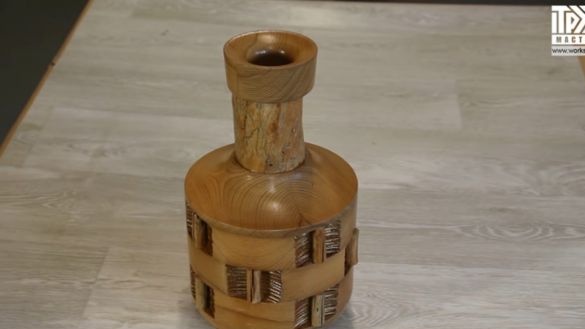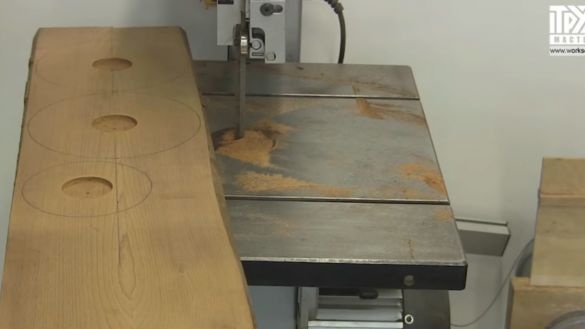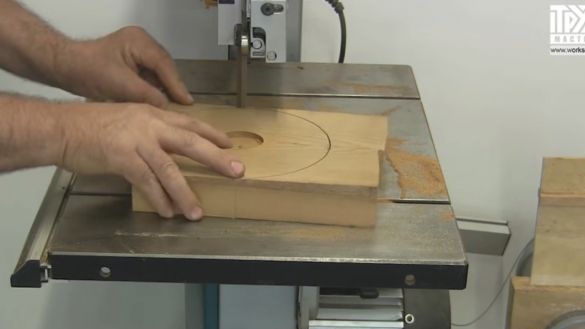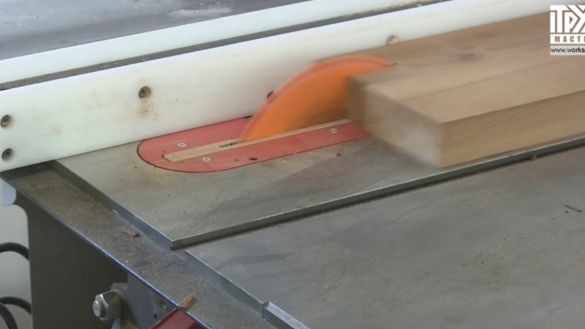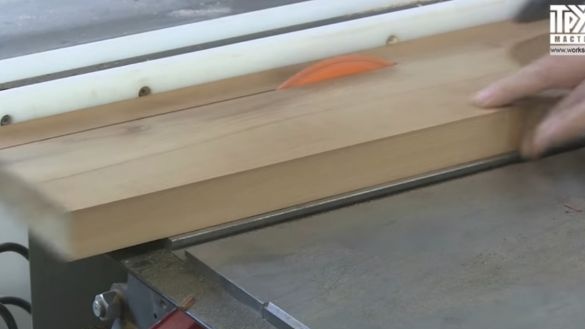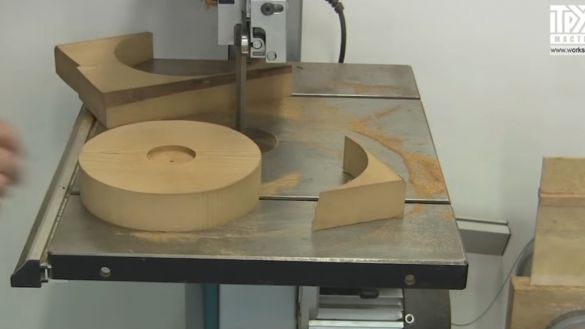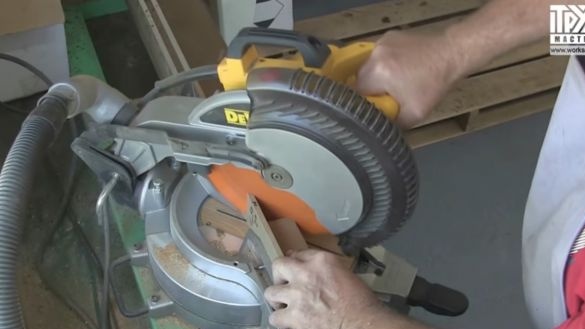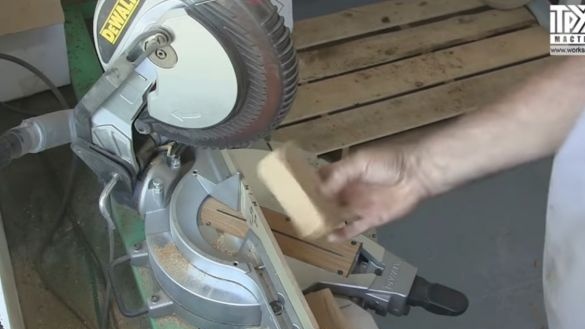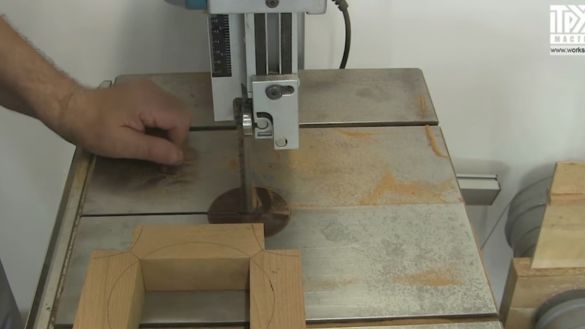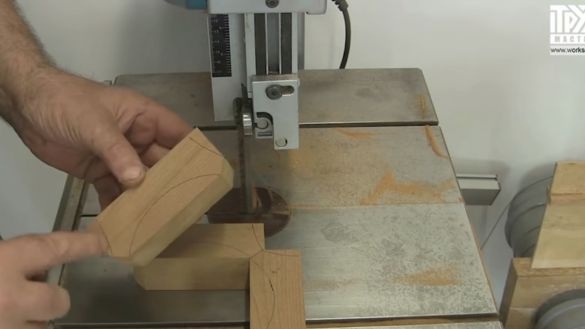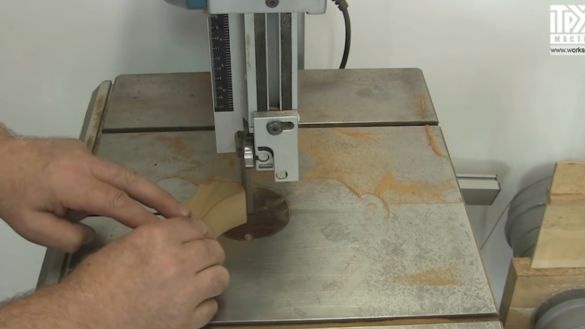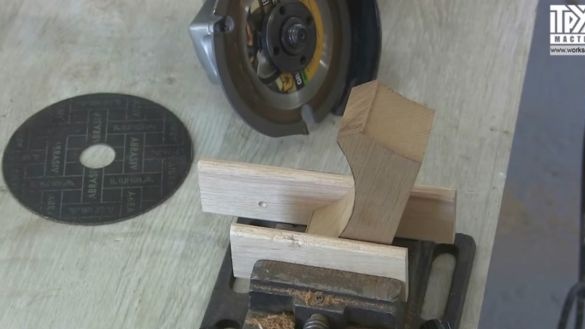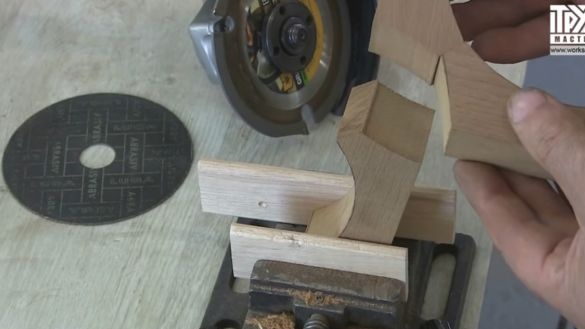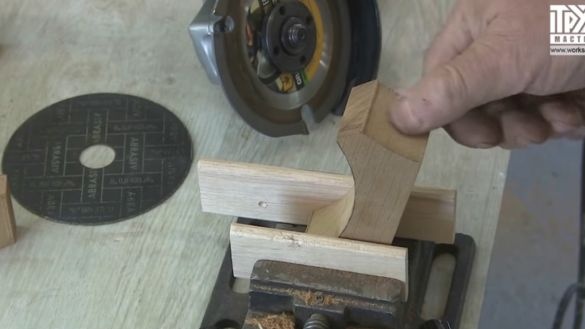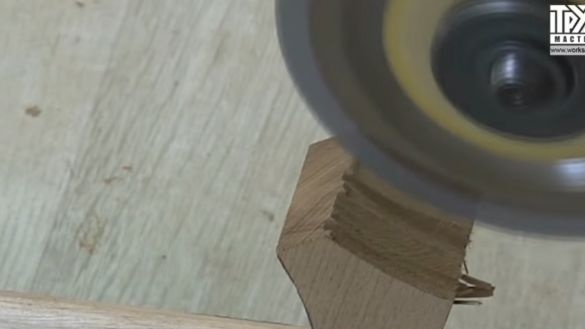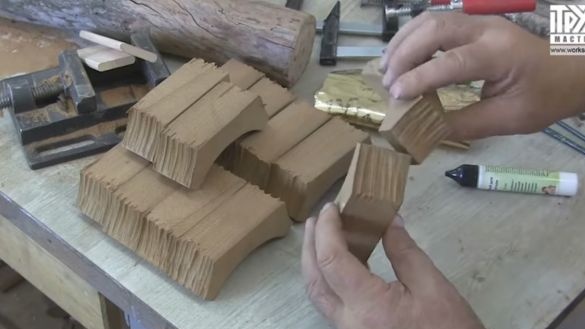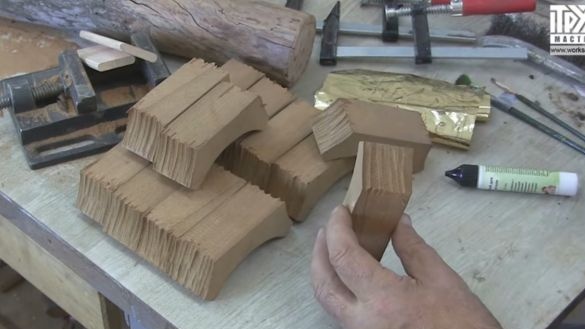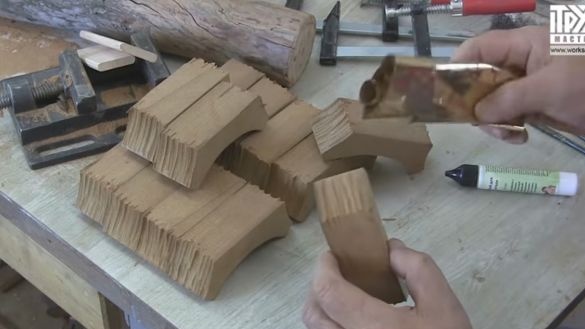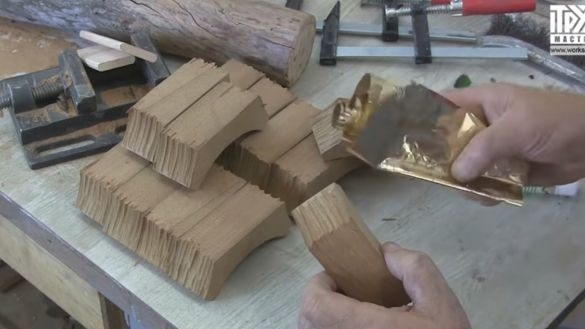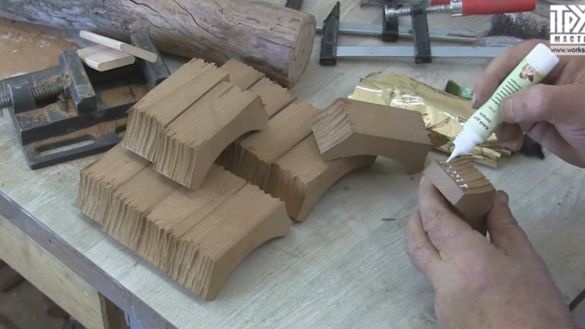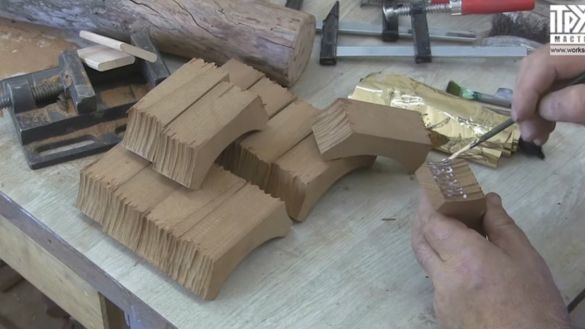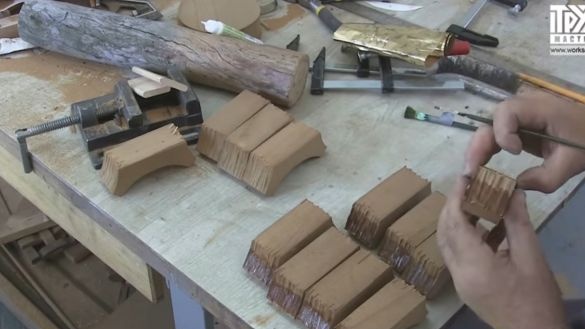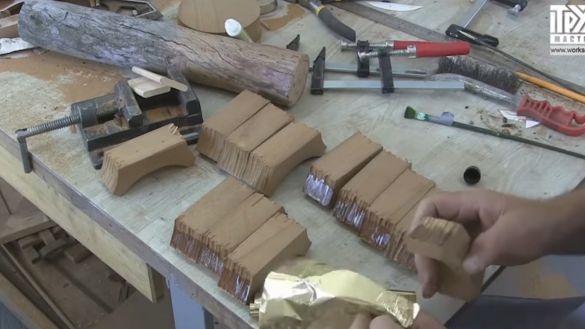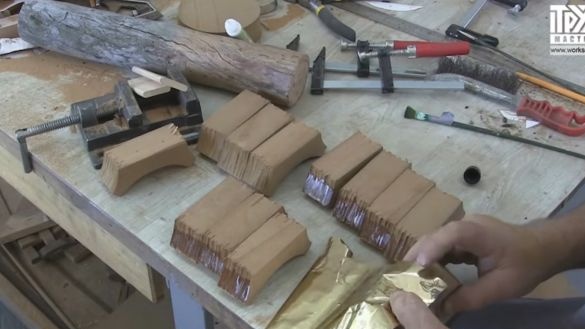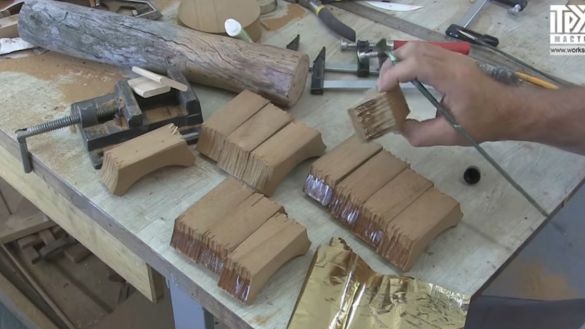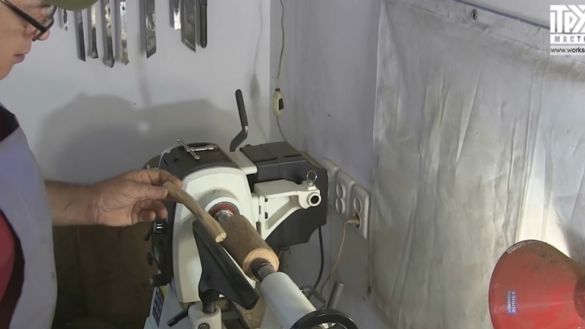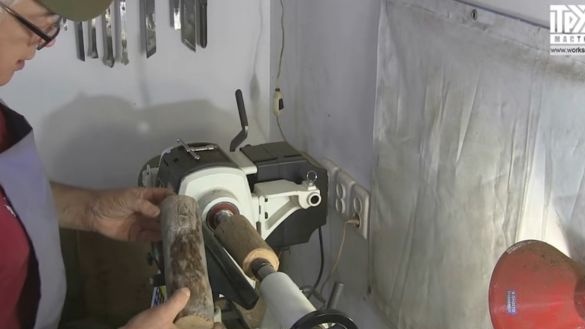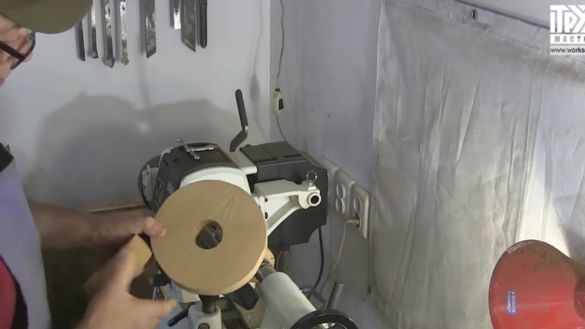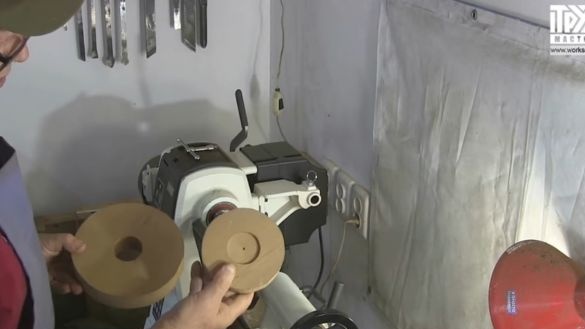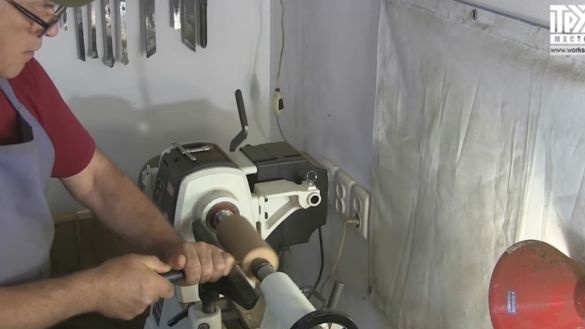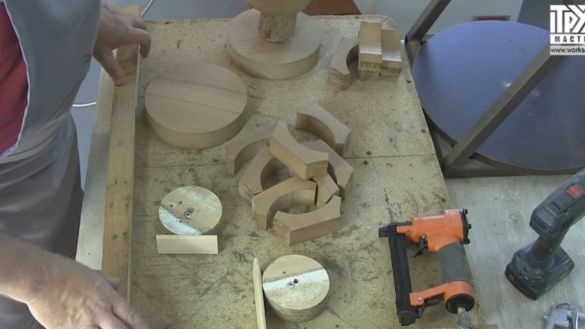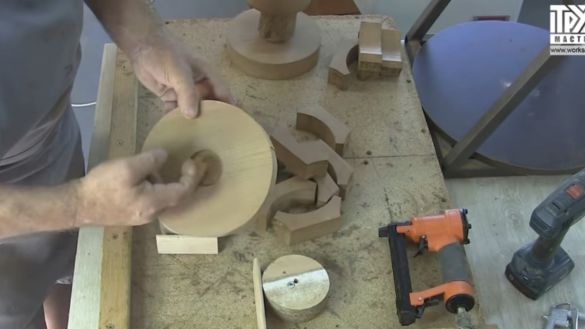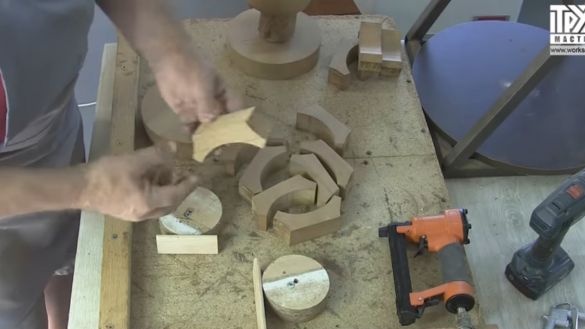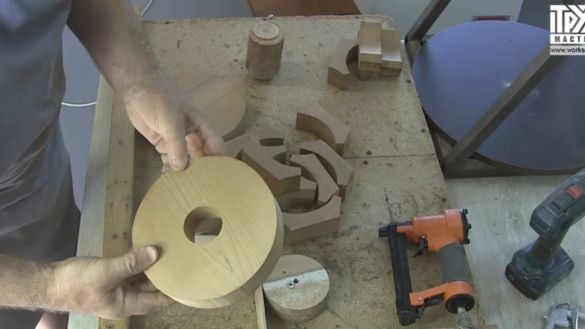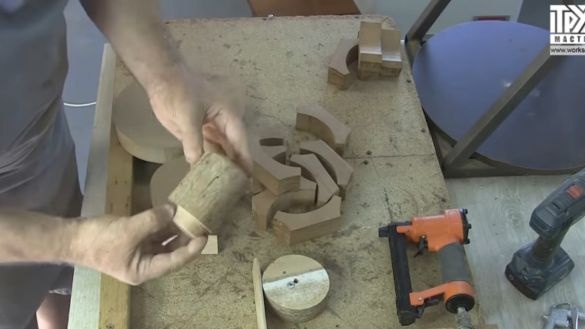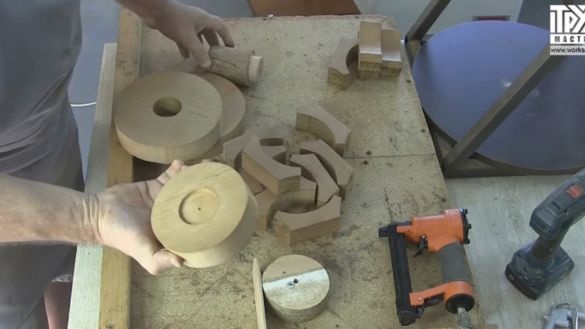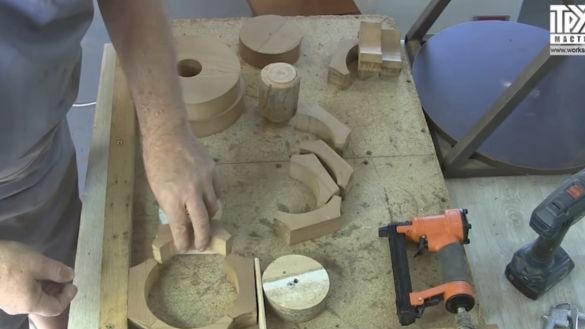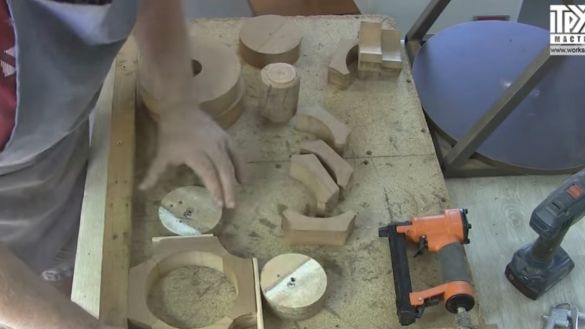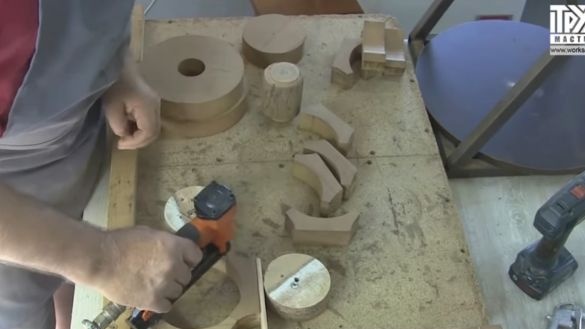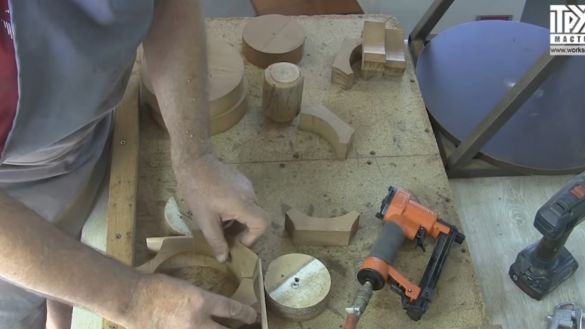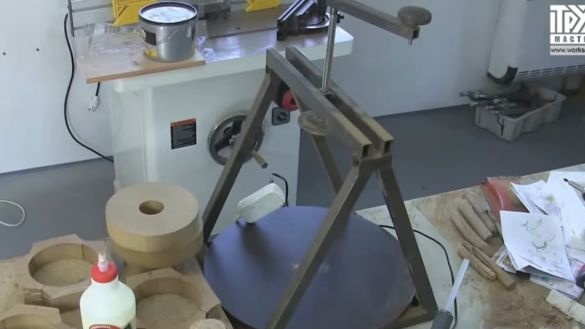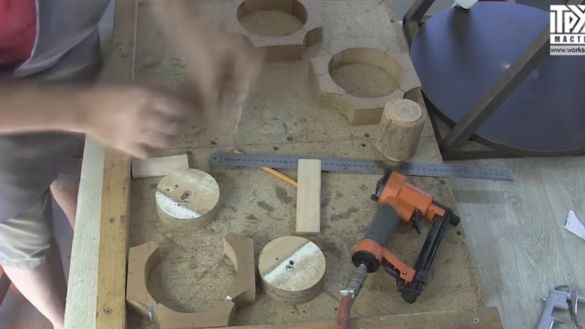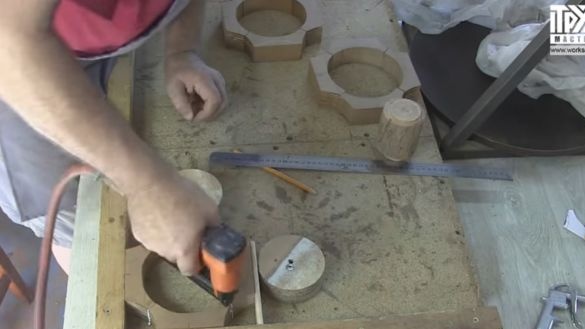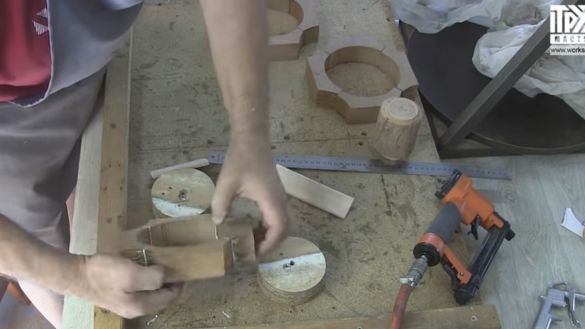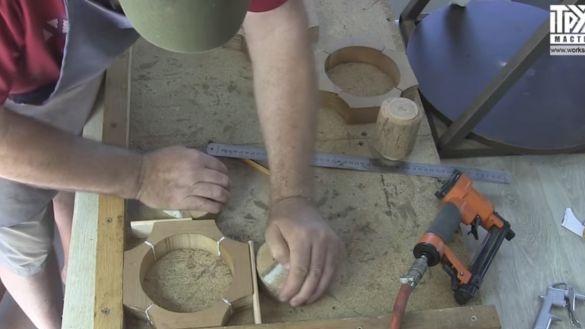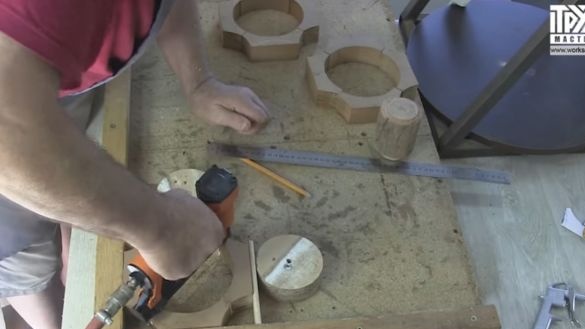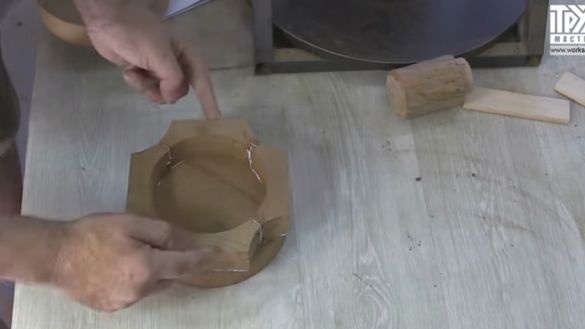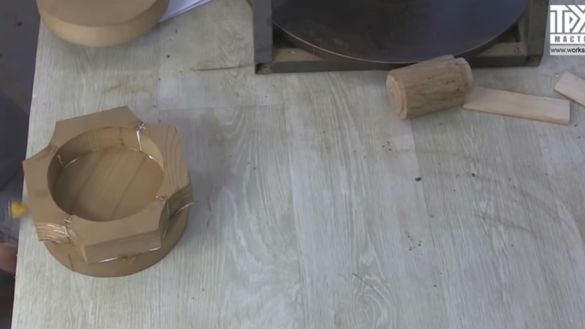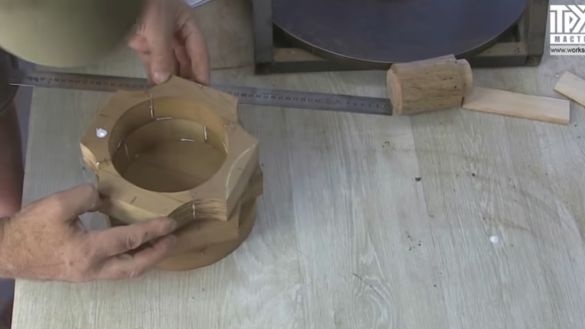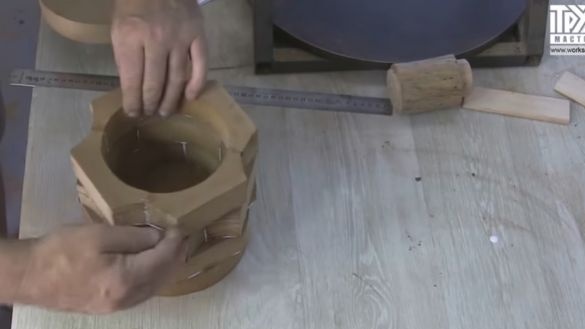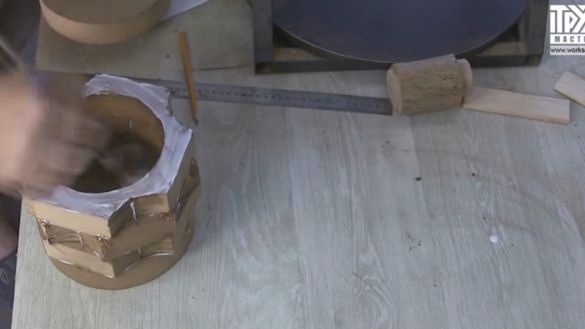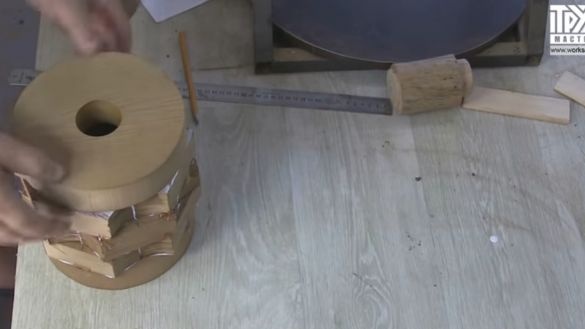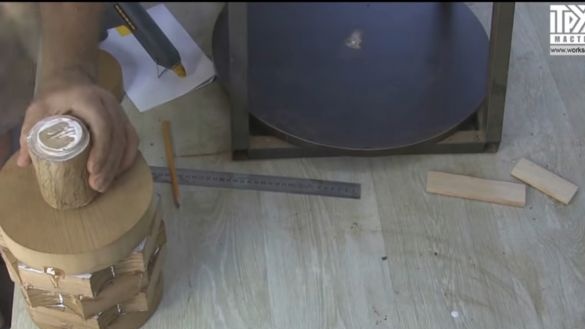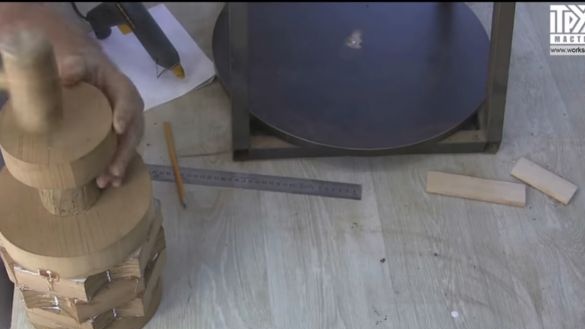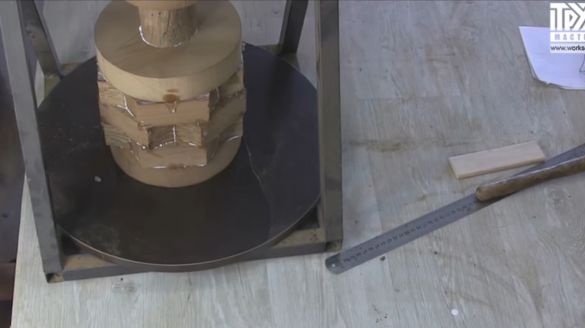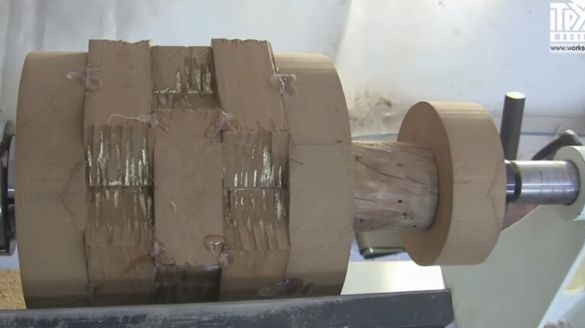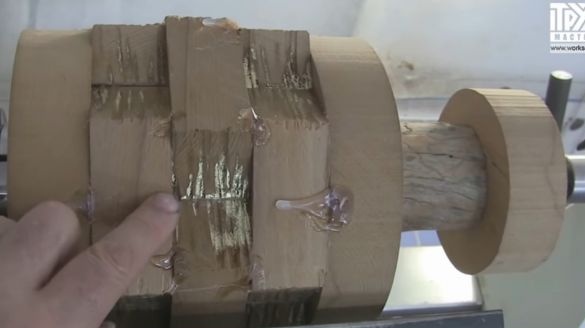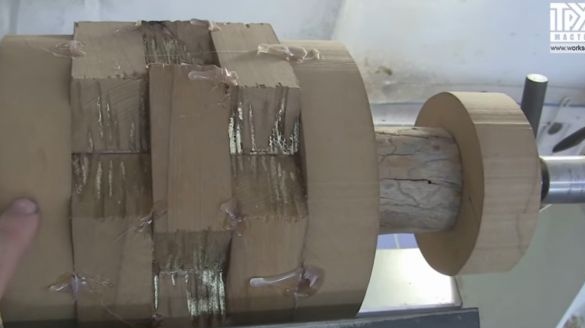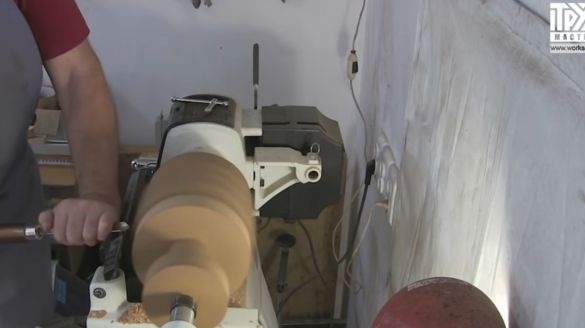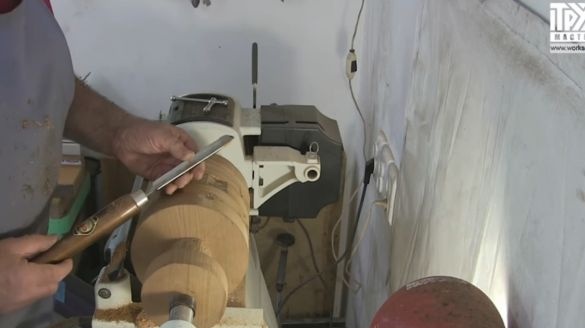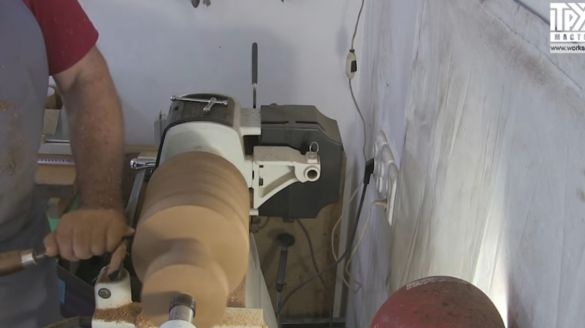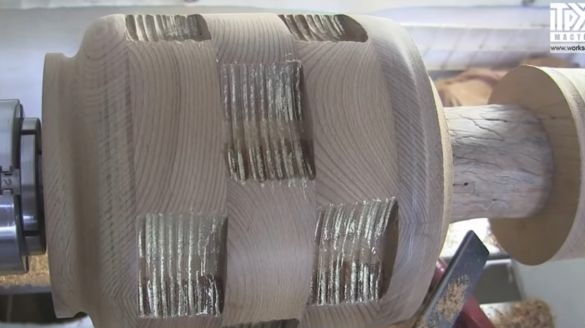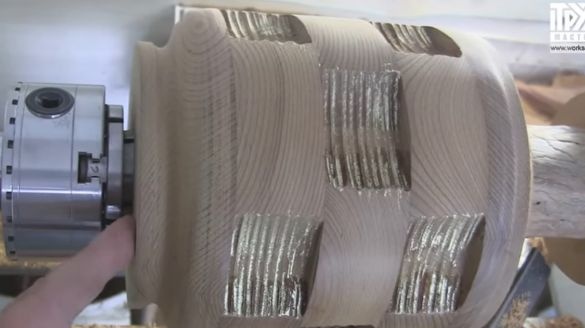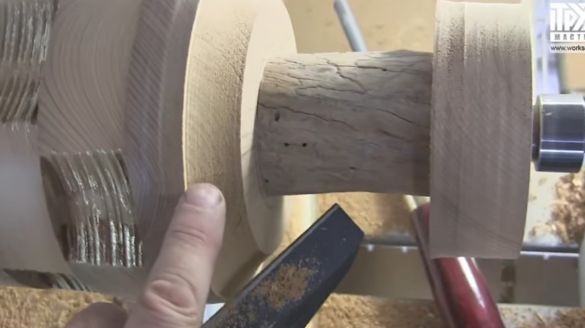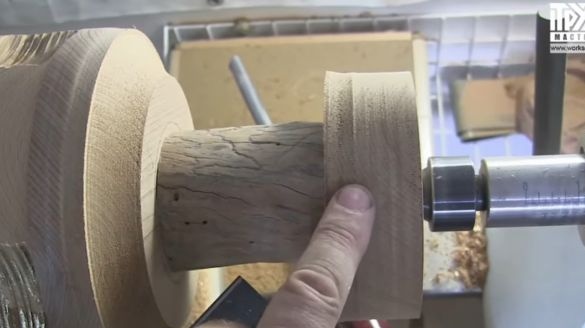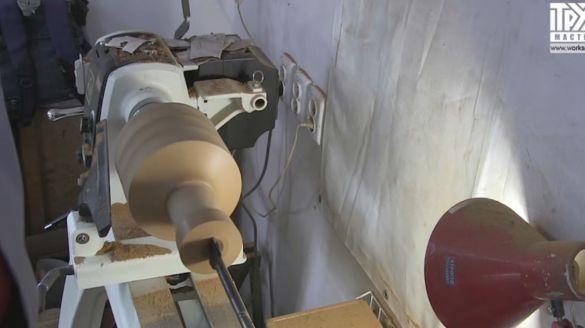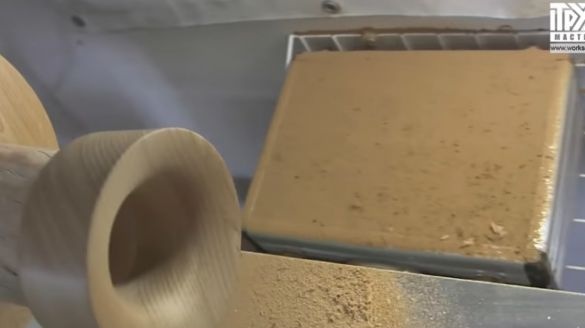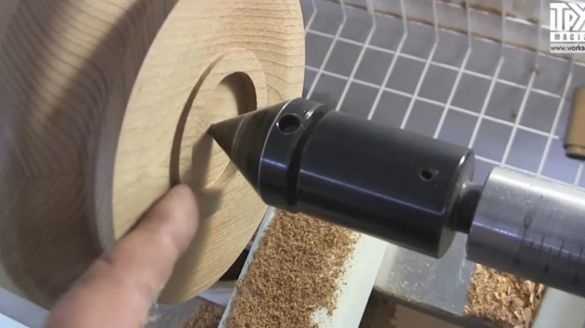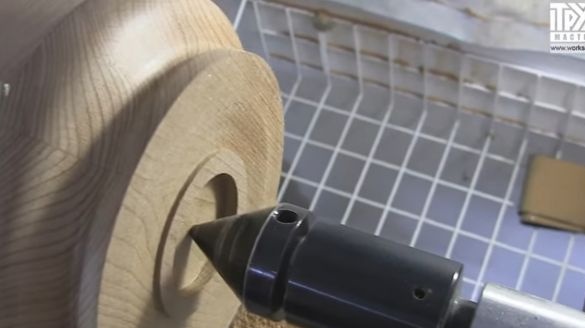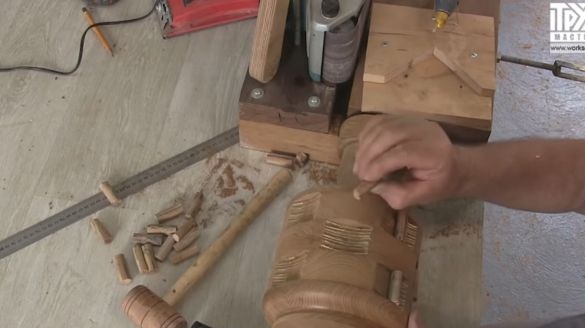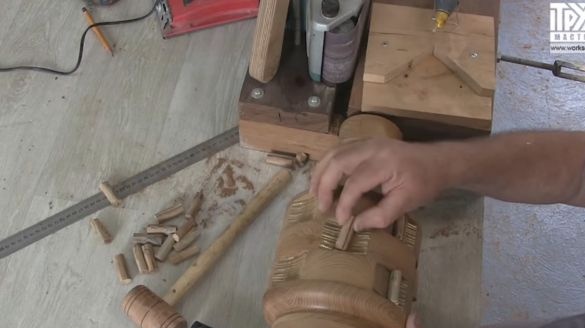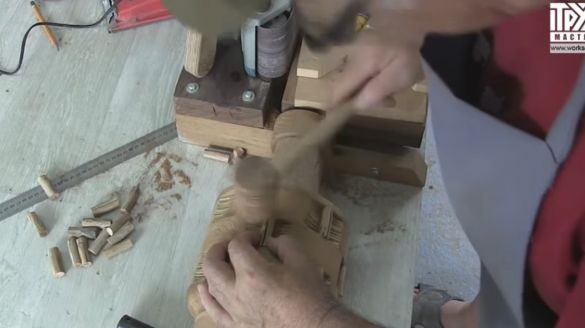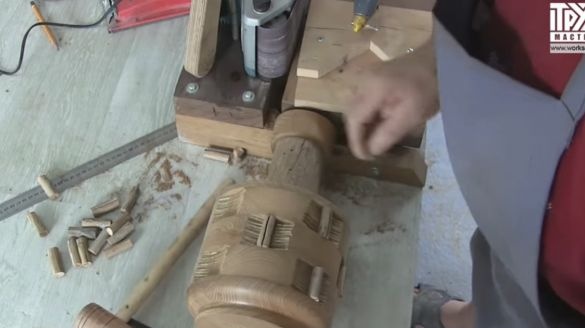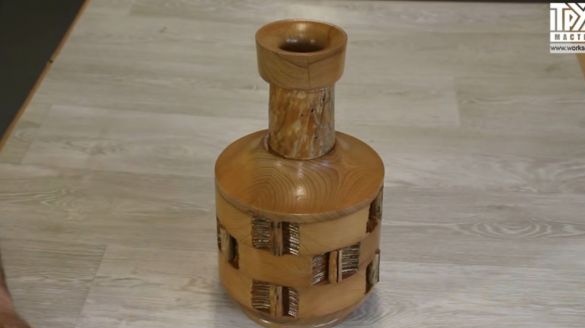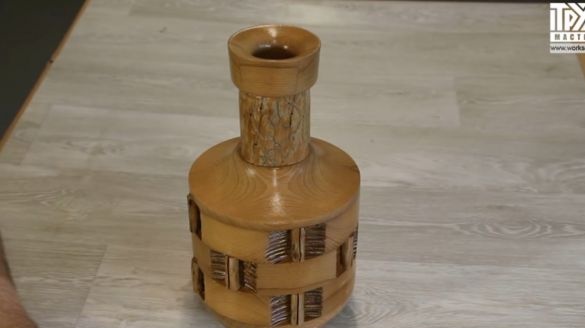In this article, Vladimir Ivanovich, the author of the channel "Vladimir Zhilenko", will tell you on the "Works of Masters" channel how to make a decorative vase with an original design.
Also, the conversation will focus on segment turning. If you come up with a joke on segments, then we can say this: each master must plant a tree, build a house, grow a tree, cut this tree.
If the tree is thick - make a table - a river, if the tree is thin, crooked, then make segment turning.
Segment turning has two problems:
First one. You must have good machines to cut corners.
AND second one. After gluing the pie, this pie must be sanded. Sometimes preparatory work takes much longer than the segment turning itself.
Vladimir Ivanovich wants to introduce you to the latest in segment turning. For the manufacture of vases will use a beech blank.
This is a beech thermo.
The author will need to cut out three circles, center, and drill a 50mm hole in these circles. To clamp a turning chuck.
Now on the band saw cut the workpiece. Includes chip removal.
After the miter saw, if you fold the blanks, they will have this form.
In theory, for a decorative vase, you can sometimes use blanks without processing inside.
If you process it inside, even go with a simple jigsaw or a band saw, of course, some kind of aesthetic inner mood will improve.
Crops on both sides, the inside cuts a little.
After assembly, the parts have this appearance.
As a decoration you need to make some broken lines, use the grinder.
Clamps workpieces in a vice, puts on a protective mask, gloves. After the saw, the parts look like this.
And after gluing, they should look something like this.
These places, of course, need to be decorated. There are many ways, you can paint, stain to apply. Erase excess and powder.
The author will use a metallized film.
It is very simple to work with the film - a special glue is used for poured.
The author does not adhere to symmetry. Applies glue and smooths with a brush. Yes, it's hot now, so it dries very quickly. In general, it is recommended to withstand up to 20 minutes, so that the glue dries, it is transparent, but it still works on the tack.These are the end cuts, it may even be necessary to apply glue here twice.
This tip will be machined on a lathe. The first layer of glue quickly dried due to heat.
Good gilding is applied to surfaces such as glass, plastic. Then he puts the film and begins to rub it with a brush. This film will stick and there will be such small golden splashes. Small overflows turn out, it is enough of it.
To decorate the vase will use deadwood branches. These are so thin, on the side surface.
And it will make a neck out of a thick one. I brushed a little with a brush, emery cloth, and it looks like this.
Such a detail will be installed in the middle part of the vase.
And in the upper part of the neck - such a detail, with a blind hole.
Therefore, it is now necessary to make a round spike with a diameter of 50 mm, so that when gluing everything coincides.
Assembly must be completed very quickly.
The vase consists of a bottom, a blind hole with a diameter of 50 mm is drilled from the bottom to clamp and process the part.
12 segments, the middle part of the vase, the neck, and the final part of the vase, the end of the neck.
The assembly will be as follows: another method, there will be many new products when glued.
On this inner surface, it will stick together and will not be processed after turning. That is, these goldfish remain. Clamps into its corner clamp.
In theory, of course, you need to wait until the glue has completely dried, then this surface must be sanded, processed and only then collected. Vladimir wants to simplify this method a little.
Applies glue to these surfaces, and shoots the joints with a stapler.
Performs all this very quickly. Then the next pie and the next, just three pies.
Then it will clamp under the press. When squeezed by the press, these parts can play a little.
Since these surfaces are all even, it is possible to do without grinding and without thicknessing.
Gluing will take a couple of minutes, once again, the process is very fast. A press and another glue gun are prepared here. When gluing pies, the author will fix them so that they do not move.
Lubricates joints with glue, and clamps in an angular clamp.
Shoots staples.
Turns over, and also fixes with brackets.
And so does three pies, then gluing.
Sets the middle part of the vase.
Clogs the neck.
And pinches the press.
After the glue has dried, the vase is clamped in a lathe.
There is a slight heartbeat.
The processing will be very simple. These forms should round off and connect with these circles.
That is, this plane should be the same.
Easy to peel, uses a Kirschen cutter. Vladimir cutter sharpened, he has the following form.
After sharpening, 4-5 turning operations were performed. He processed the thermo wood, it is very strong, and during this time the cutter has never sharpened. We can definitely say that steel is good.
Turning is slowly going on, the bottom needs to be trimmed from below, because there is beating.
It is also being processed here, it remains the neck and top to finalize.
Here decorative elements will be inserted, branches just like a neck, only thin. An interesting neck drilling process.
The drill is a drill from a perforator with a diameter of 40 mm, re-sharpened, re-riveted.
There is very little time left to decorate this carpentry work.
It’s not in quality of advertising anymore, I just want to say if the cartridge is good - look at what possibilities this cartridge has.
Here it is necessary to trim just a little bit on the bottom, there is nothing left but to hold it by the neck, by the top.
There are special soft pins on the cartridge, there are only 8 of them. They hold the part, on the other hand here the part is tightened by the center.
At the bottom, just a little walk, however, the operation can be done beautifully.
Thin branches cleared of dust and old age. It will be fixed with a glue gun.
Beautiful, and so repeats 12 times.
As a finish, two layers of waterborne acrylic varnish are applied.
This is the kind of carpentry. Finished vase using segment turning.
Interesting work turned out, unusual. Thermo beech was used as the material; it has such a straw color. I used deadwood branches as a finish.
It is a decorative vase, and it has such a narrow neck.
Separately, Vladimir wants to stay with the novelties that he applied in segment turning.
Usually, with segment turning, you need to make a cake, wait for it to dry, then grind this cake. And also glue the next pie, grind, then these pies and glue together.
Then process the part on a lathe, then build up, process the vase again. This process of making a vase takes a very long time.
What is the author's novelty. Firstly, there are few segments. With a diameter of 180mm, only four segments per circle. You can, of course, add and make six.
The processing of these elements went well, there are no burrs, chips, everything is smooth and even. Vladimir fastened the segments with a stapler, an unusual approach. The staples for the stapler were not visible inside. He fastened all segments together, first with a pistol, then crushed with a press.
And the whole vase has dried. That is, the gluing of the vase occurred in one go. This vase took one working day to make. Subtract another four hours under pressure. As a result, in half a day I made such a vase.
Thanks to Vladimir Ivanovich for the non-standard acceleration of the gluing process, and an unusual vase!
All good homemade products.

